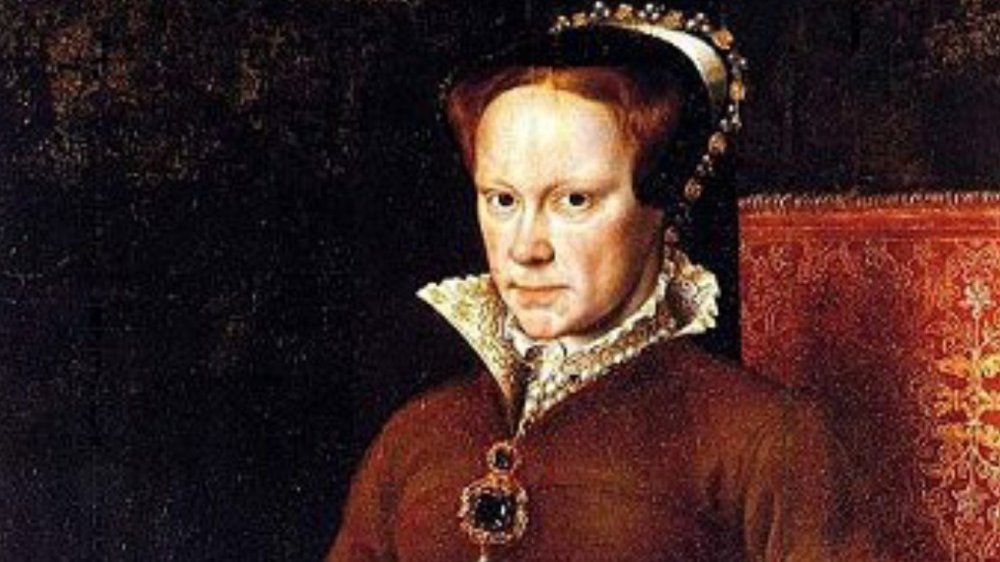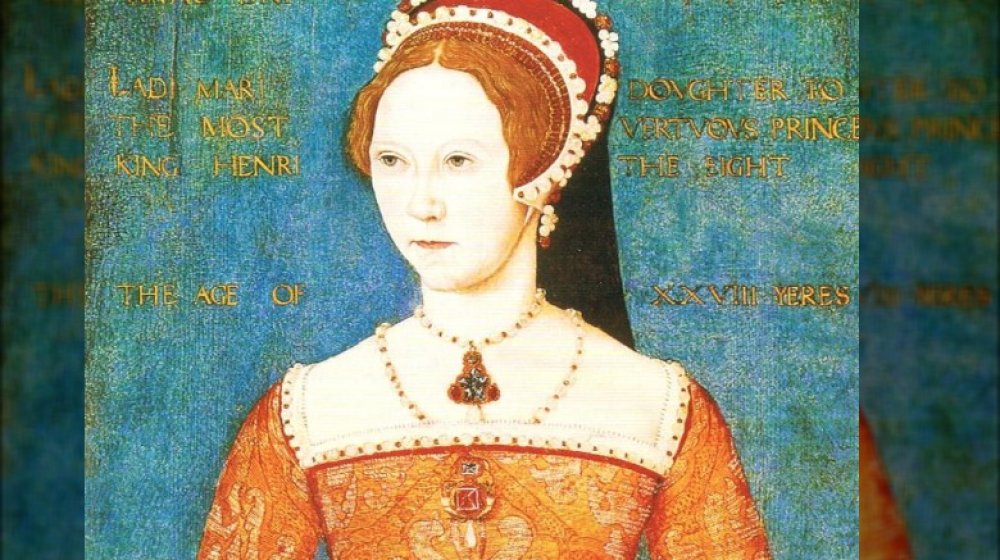The Truth About How Bloody Mary Got Her Name
In a perfect world, this would be an article about a party queen who loved dunking tomatoes in vodka and chucking them at unsuspecting guests until one day she bit into one (a vodka tomato, not a guest) and said, "I'd like to drink this." But this is not a perfect world. And Mary I of England wasn't a perfect person, especially in the eyes of those who dubbed her "Bloody Mary."
Mary was a woman of many firsts. She was the first female monarch to rule England, according to History, and "the only surviving child of Henry VIII and his first wife, Catherine of Aragon." Her father was the first king to be addressed as "Your Majesty" and is typically considered the founder of the Church of England. That last historical first goes a long way to explaining Bloody Mary.
Henry desperately wanted a male heir and apparently thought Catherine of Aragon's ovaries were broken because he wanted a divorce so he try his luck with a new spouse. But Pope Clement VII refused. Things got pretty inclement from there. Henry pooh-poohed the pope and declared that only England's king could head its church. This power move allowed Henry to keep remarrying, betraying, and occasionally murdering wives until he sired the male heir he so desperately wanted. It also moved England away from Catholicism and toward Protestantism. But once Mary took the throne she tried to reinstate Catholicism, and all hell broke loose.
The lady doth Protestant too much
Mary I ascended to the throne in 1553 after Henry's sole male heir, Edward, died. During her five-year reign she would try to undo her father's deeds. According to History, she undid her parents' divorce. Hellbent on reestablishing Catholicism, she began persecuting Protestants. More than 300 people were burned at the stake, which was the fate of all convicted heretics back then. In that sense, Mary wasn't especially bloody. However, after her death in 1558, she was succeeded by her sister, the very Protestant Elizabeth I.
During Elizabeth's stint as queen, a so-called Protestant "martyrologist" named John Foxe, wrote his famed Foxe's Book of Martyrs, which gave rise to Mary's bloodthirsty image. In particular, the work contained woodcuts that depicted executions in painstaking detail. So Mary I became "Bloody Mary" because winners write history.

